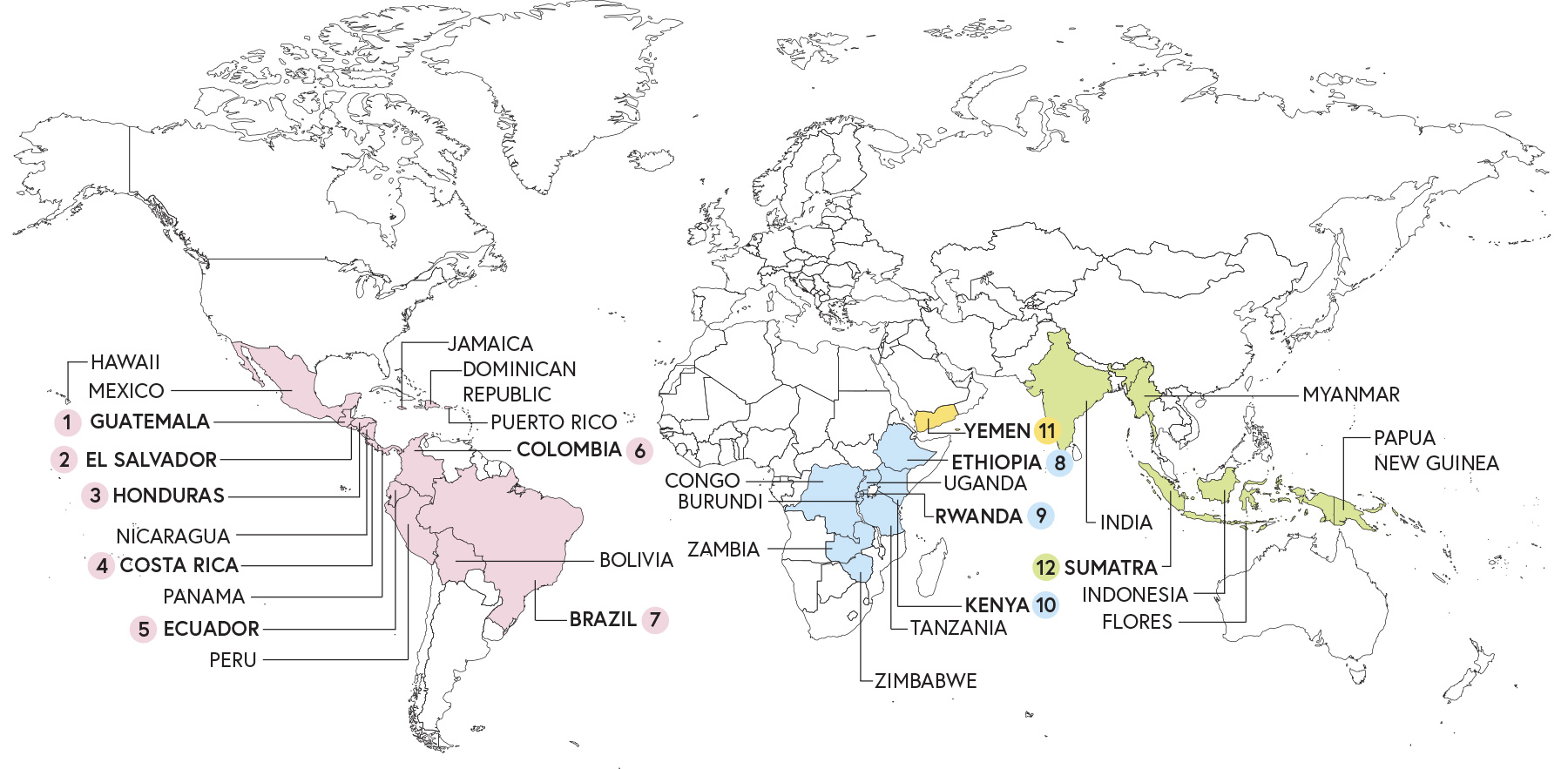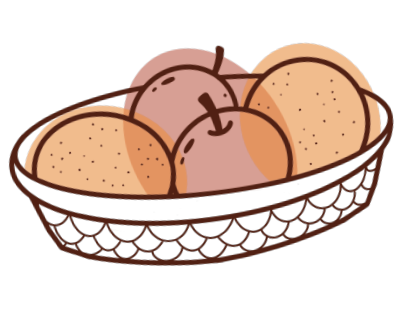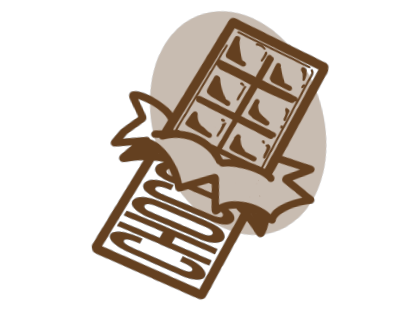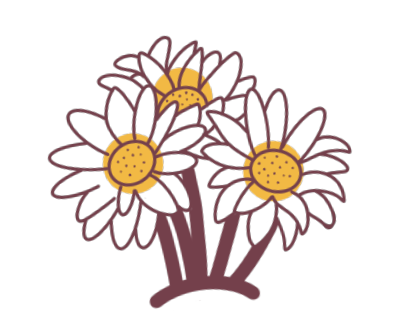August 21, 2019 — The Coffee Issue
A Flavor Guide to Coffee From Around the World
With Go Get Em Tiger’s Zakiya Mason

Introduction by Antonio Diaz
Illustrations by Cesar Diaz

This story can also be found in our inaugural issue of Life & Thyme Post, our limited edition printed newspaper for Life & Thyme members.
Throw a rock any direction in a major metropolitan city and you’ll be sure to hit a specialty coffee shop with single origin beans that have been meticulously picked from far-off lands. We are accustomed to seeing coffee bags with country names like Colombia, Honduras, Ethiopia or if you’re lucky, Yemen. But can you tell the difference in flavor from a coffee bean grown in Guatemala versus one in Kenya?
Tasting the nuance in coffee can be complex and having to describe flavor notes can be intimidating for the untrained palette. So we enlisted Zakiya Mason, quality control director for Los Angeles’ Go Get Em Tiger, to give us a lesson on coffee flavor notes from a few places around the world. One thing to remember is flavor can often be subjective from person to person and there are often no right or wrong answers. Even for baristas, finding differences on specific countries close to each other can sometimes be challenging. “A lot of the time Central America is all lumped together or even Eastern Africa,” Mason explains. “It can be difficult to differentiate on a macro or a micro level.” But that shouldn’t stop you from trying new coffees and training your palette on what comes to mind. As a starting point, let Mason be your guide around the coffee world.


 1. GUATEMALA
1. GUATEMALA
“A lot of Guatemalan coffees that I really love have crisp, fresh apple and orange and are just really sweet and smooth.”
 2. EL SALVADOR
2. EL SALVADOR
“Chocolate nut bar that has a little bit of that dryness of Brazil nuts but a rich, fruity, cacao quality as well.”
 3. HONDURAS
3. HONDURAS
“Some of the varieties that are very specific to Honduras like Parainema can be incredibly herbaceous and acidic; but the more common, like the Pacas variety, is like cherry, chocolate, sweet—it can be incredibly floral as well.”
 4. COSTA RICA
4. COSTA RICA
“A fancy peanut butter and jelly sandwich, like almond butter and kumquat jam.”
 5. ECUADOR
5. ECUADOR
“Peach, tropical, and some floral qualities—[Ecuador has] incredibly high elevations and incredible conditions for growing coffee.”
 6. COLOMBIA
6. COLOMBIA
“Colombian coffee is very accessible; it is the most accessible flavor profile for most specialty coffee drinkers. The clean, medium sweetness, medium acidity, and some good chocolate notes are the very classic Columbia flavor and one that people think of when they think of coffee. That being said, there is an enormous range of quality and the highest tier of these coffees can be floral and even tropical in flavor.”
 7. BRAZIL
7. BRAZIL
“I think of the winey natural processed coffees. Something like a liqueur—almost verging on savory but tied in with nuttiness.”
 8. ETHIOPIA
8. ETHIOPIA
“The complexity of an oolong, for example, unfolding itself with every steep. You can find the complexity if you are looking for it, but you can also just sit and enjoy it without thinking about it. [I think of] Obama and Ethiopian coffees as approachable leaders. He seems like someone I’d really want to hang out with. [I could find out] he could either be someone who is super chill and we talk about nothing, or [he could] could open up my mind to a whole other perspective and teach me something I did not know.”
 9. RWANDA
9. RWANDA
“Rwandan coffee has a lot of those qualities that I love about Ethiopian coffees—that vibrant acidity and sweetness of stone fruit and berry flavors. But it also has this earthiness—a little bit of grit.”
 10. KENYA
10. KENYA
“Kenyan coffee, at its best, is going to be an experience. This is very punchy and has incredible vibrant acidity. I’d venture to say it’s the most divisive origin for coffee flavors because you either love the intensity and vibrancy, or you hate it and taste sour grape juice. Either way, you probably just want a small cup.”
 11. YEMEN
11. YEMEN
“[Yemeni coffee] feels like a coffee that is very approachable and has earthy, savory-sweet qualities, but someone with a keen interest in exploring less accessible coffee origins would be most attracted to it. Who is approachable but fancy?”
 12. SUMATRA
12. SUMATRA
“Basically [Sumatran] coffee in parchment is wet for a lot longer than a coffee coming out of Central America, South America or Africa. That adds a very specific characteristic and that is due to the region and standard practices. It’s a very moist place, with very high-humidity. I think of a funk or pungent characteristic.”







Our comments section is for members only.
Join today to gain exclusive access.